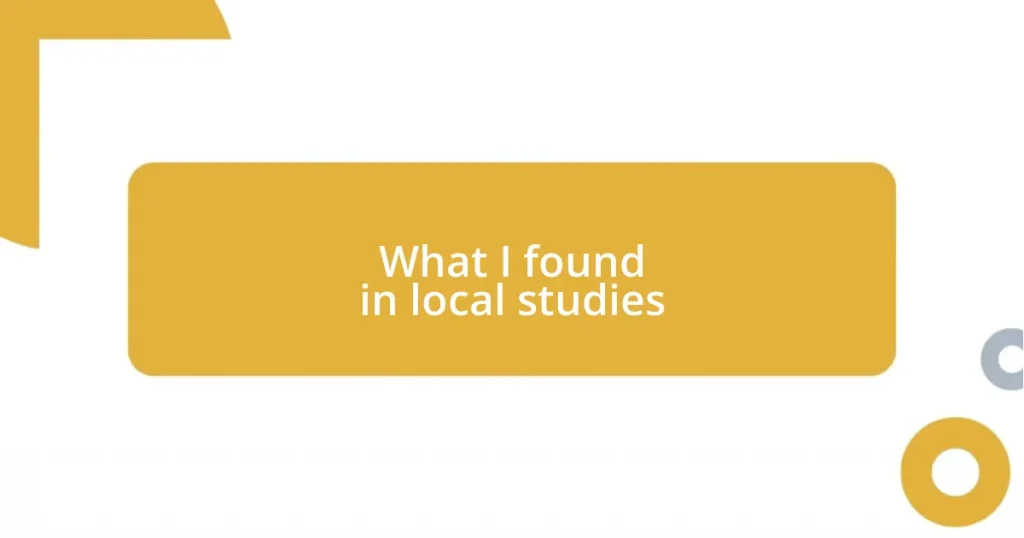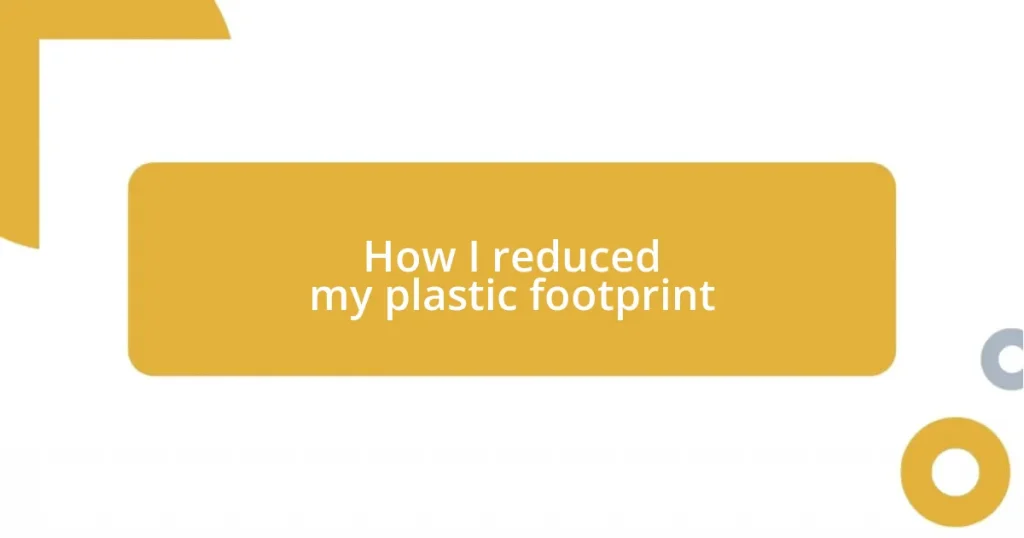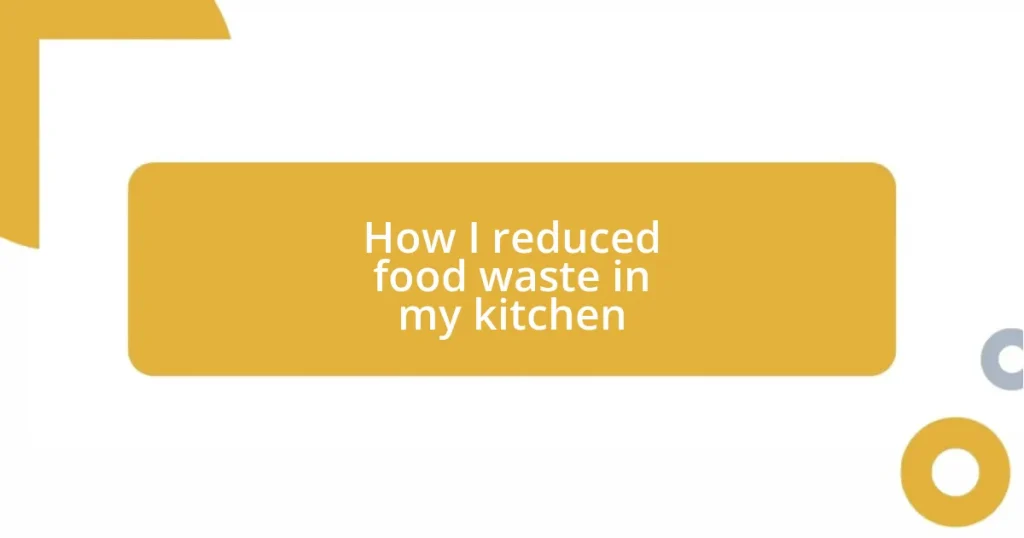Key takeaways:
- Local studies enhance community pride and understanding through shared narratives and engagement with local history.
- Utilizing diverse methodologies, such as qualitative and quantitative approaches, fosters community ownership and deepens insights.
- Community initiatives, such as gardens and literacy programs, illustrate the transformative power of collaboration and relationship-building.
- Technology and interdisciplinary approaches are crucial for future local studies, facilitating real-time feedback and innovative solutions.
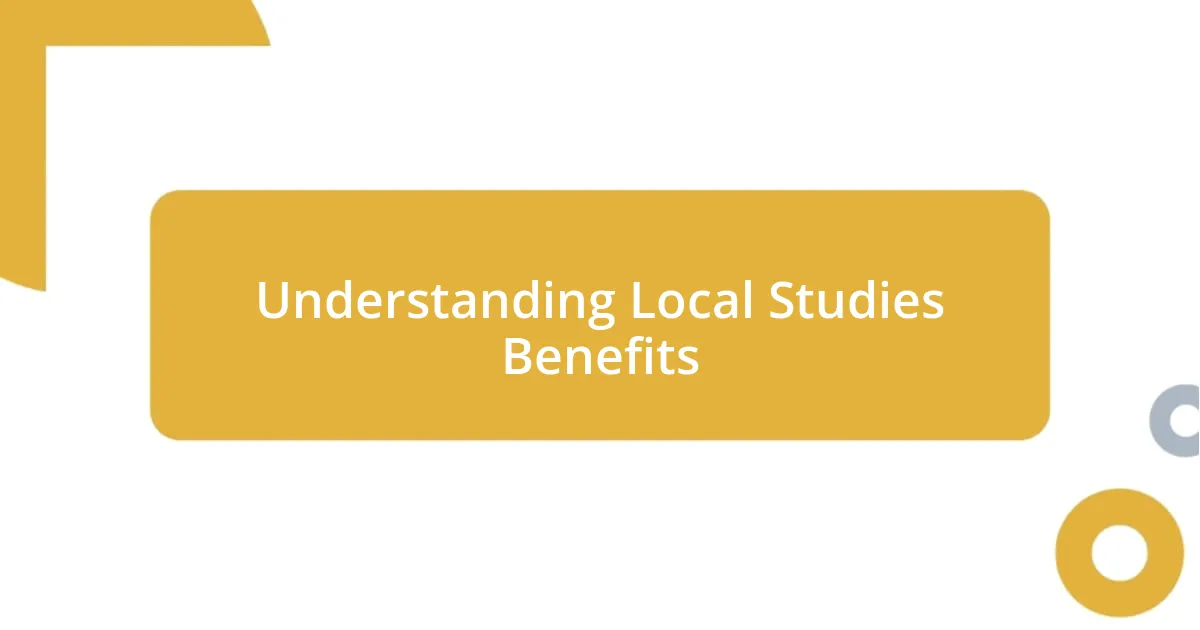
Understanding Local Studies Benefits
Local studies provide invaluable insights that often highlight the unique characteristics of a community. I remember attending a local history workshop where I discovered the forgotten stories of my neighborhood’s founding families. Have you ever stumbled upon a piece of history that felt like it came to life? Those local narratives not only enrich our understanding but also instill a sense of pride in our roots.
One benefit I’ve noticed is the opportunity to connect with people who share similar interests. I recently participated in a book club focusing on our town’s literature; it was amazing how the discussions sparked deeper conversations about our community’s current challenges. Doesn’t it feel empowering to engage in dialogues that not only reflect our local culture but also foster collective growth?
Additionally, local studies often reveal patterns and trends that can guide future planning. While working on a project for a community garden, I tapped into studies that showed which plants thrived in our soil and climate. It struck me how these findings could encourage sustainable practices and enhance our connections to the environment. So, how can embracing local studies lead us to more innovative solutions in our neighborhoods?
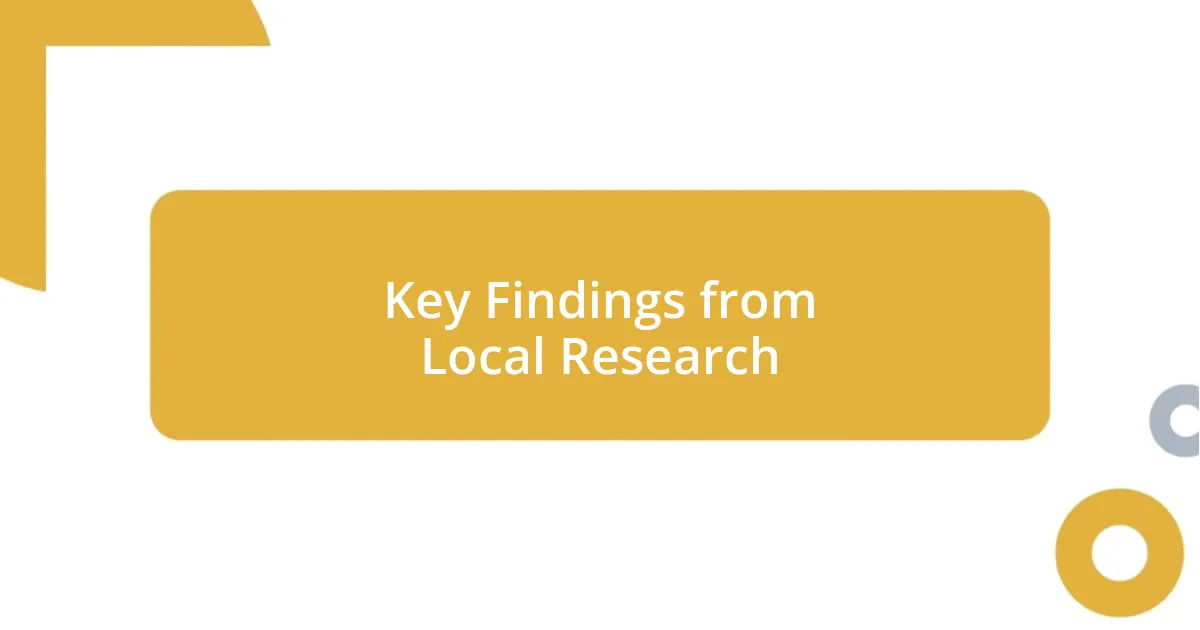
Key Findings from Local Research
Local research often uncovers unexpected demographics that play a vital role in community dynamics. For instance, during a recent study about neighborhood engagement, I was shocked to learn that a significant percentage of residents had lived in the area for over 20 years. It opened my eyes to the depth of experience and perspective they bring, enriching our community’s narrative. How does it feel to know that your neighbors might have stories that could change your understanding of home?
Moreover, the key findings highlight that local initiatives often succeed because they resonate with community values. I recall volunteering for a local arts program that sprang from grassroots efforts. The level of support from our neighbors was heartwarming and revealed how deeply invested they were in preserving our cultural identity. Isn’t it fascinating how local findings can spark movements that unify and strengthen community ties?
Finally, analyzing local safety data can be illuminating. In a project I was involved with, we discovered that certain areas had a much lower crime rate due to community watch programs. This insight encouraged us to foster more safety initiatives, reinforcing the idea that proactive involvement leads to tangible improvements. Have you noticed how the data can sometimes push us to take action we never considered before?
| Key Finding | Description |
|---|---|
| Demographics | Many long-term residents contribute unique perspectives to community life. |
| Community Initiatives | Grassroots programs align closely with local values, fostering strong support. |
| Safety Insights | Data on crime rates highlights the effectiveness of community involvement. |
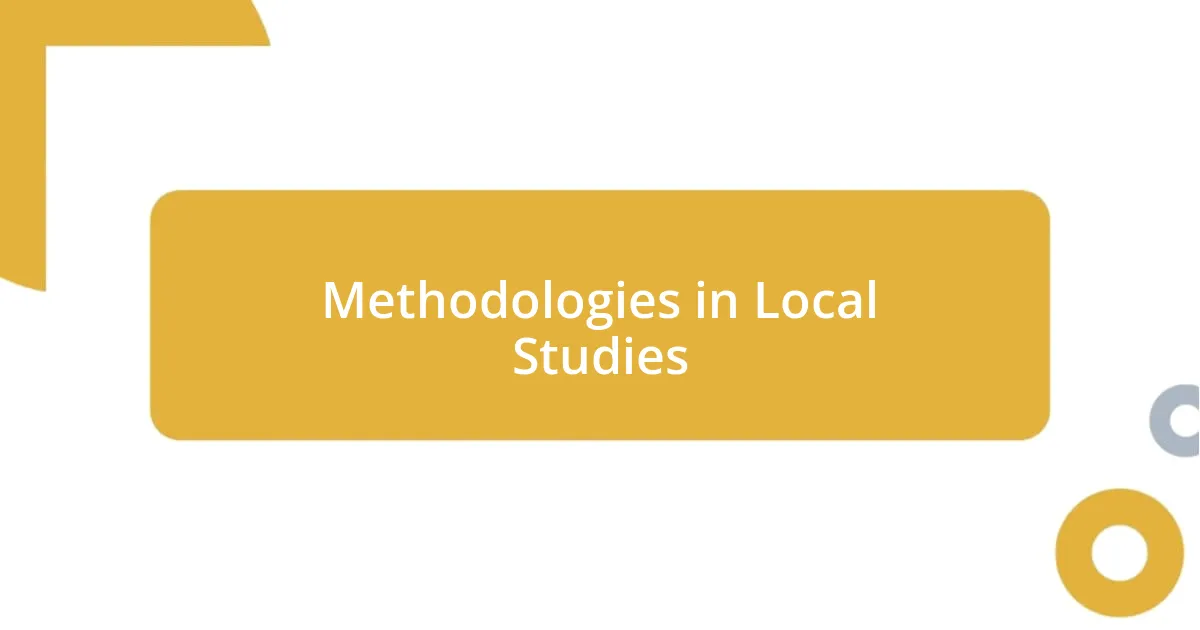
Methodologies in Local Studies
When diving into methodologies in local studies, it becomes apparent how vital it is to adopt a multi-faceted approach. I recall working on a community survey where we used both qualitative and quantitative methods. Personally, interviewing residents added a layer of richness to our findings, allowing me to capture their emotions and stories directly. On the other hand, analyzing statistical data helped us ground our insights in concrete evidence. It’s fascinating how blending these methodologies can create a more holistic understanding of local issues.
- Qualitative Methods: Interviews and focus groups that capture personal narratives.
- Quantitative Methods: Surveys and data analysis providing numerical insights.
- Participatory Research: Involving community members directly in the research process to ensure diverse voices are heard.
- Case Studies: Detailed examination of specific local initiatives to understand their impact and success factors.
In my experience, these methodologies not only enrich the findings but also foster a sense of community ownership. After a project analyzing recreational spaces, we decided to incorporate resident feedback into planning future improvements. The excitement in the room was palpable as ideas flourished from our discussions, showcasing the collective pride we felt for our shared spaces. It truly illustrates how employing varied methodologies can lead to actionable change that resonates deeply within the community.
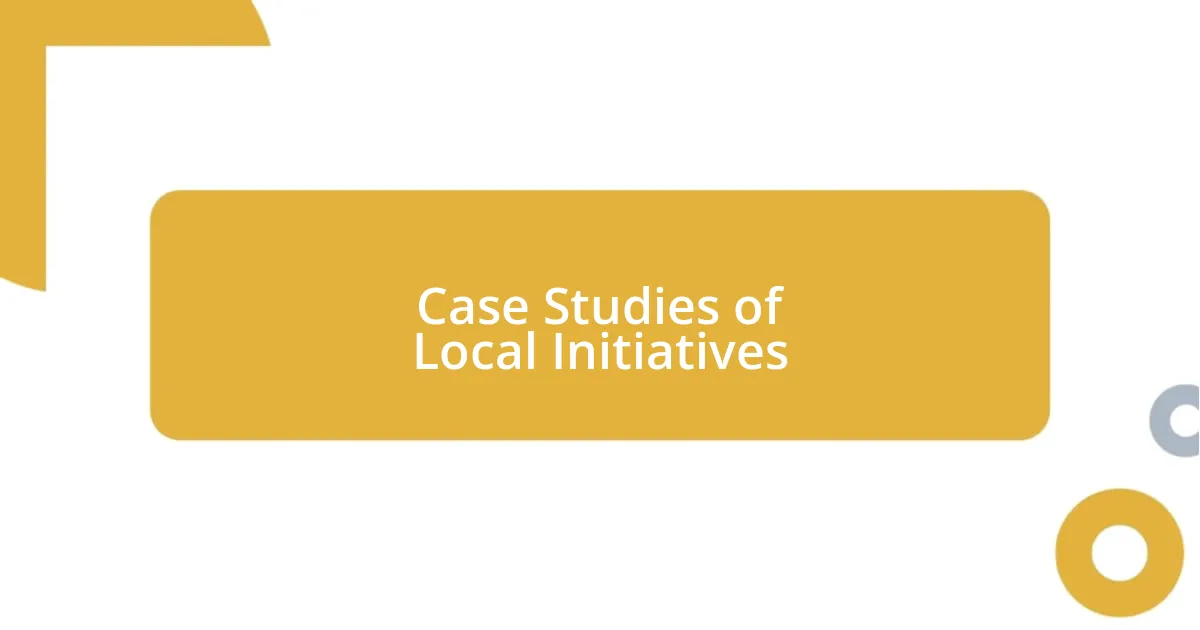
Case Studies of Local Initiatives
During my time engaging with local initiatives, one standout project involved a community garden in a neighborhood struggling with food insecurity. As I joined hands with residents to dig in the soil, I felt an overwhelming sense of connection. It was more than just growing vegetables; it was about cultivating relationships. Watching families come together to tend to the garden, I couldn’t help but wonder: what other hidden potentials lie within our communities waiting to be nurtured?
Another remarkable case was a local literacy program tailored for immigrants. I had the privilege of attending one of their sessions, where I met an elderly gentleman who had never set foot in a classroom. His determination to learn English brought tears to my eyes. The initiative didn’t just teach language skills, it built bridges among cultures. How often do we underestimate the power of education to transform lives and foster understanding?
Similarly, a neighborhood clean-up initiative I participated in revealed the power of collective action. On that rainy Saturday morning, while we labored to clear the streets, I observed a profound shift in community spirit. Strangers became friends, and what began as a chore evolved into a celebration of pride and ownership. It raised a thought in my mind: isn’t it inspiring how simple actions can lead to collective transformation? Each case study I encountered reaffirmed that, at the heart of these local initiatives, lies a rich tapestry of human connection and shared purpose.
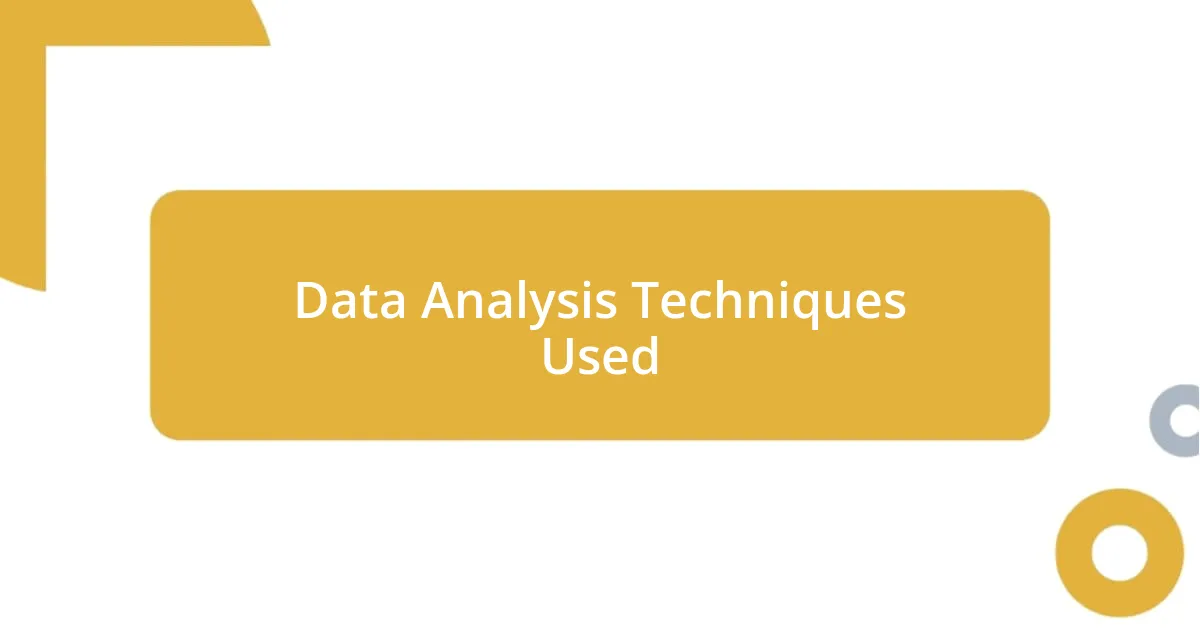
Data Analysis Techniques Used
Data analysis techniques can significantly shape the outcomes of local studies, and I’ve seen firsthand how important it is to select the right approach. For example, while collaborating on a community health assessment, we employed spatial analysis to identify patterns in healthcare access. I was amazed when visualizing the data revealed gaps in service that weren’t obvious at first glance—this kind of insight has the power to inform future resource allocation, making a tangible difference in people’s lives.
In another project assessing educational outcomes, we used mixed methods to deepen our understanding. I remember sitting with educators to discuss our quantitative findings, only to uncover stories that brought those numbers to life. How can we advocate effectively for our communities if we only focus on hard data? The emotional weight of personal experiences can drive home the importance of our findings, making them resonate with decision-makers who often sit behind desks far removed from the realities we observe.
Participatory research techniques, where community members actively engage in data collection and analysis, always stand out in my experience. I recall a workshop where we trained local youth to conduct surveys on their neighborhood’s resources. The excitement they expressed as they compiled the results was contagious. Isn’t it powerful to think that empowering individuals can lead to richer data? Not only does this method enhance the relevance of our findings, but it fosters a sense of ownership that can spark ongoing community involvement and initiatives.
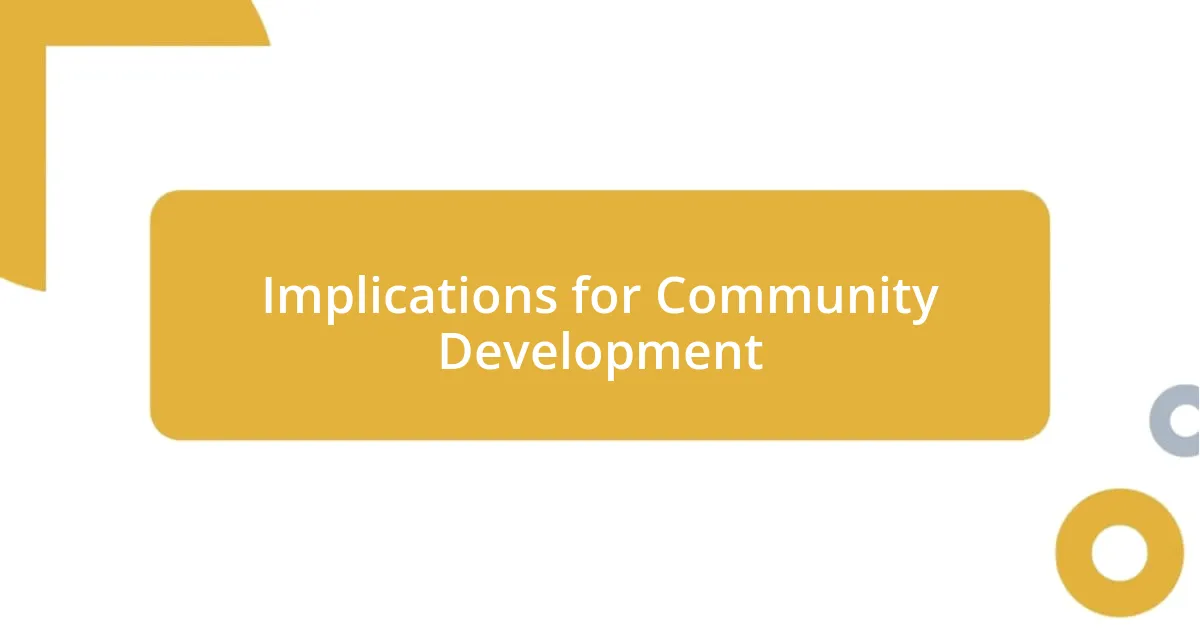
Implications for Community Development
Participating in various local initiatives has shown me that community development thrives on collaboration and trust. I remember a storytelling session hosted by a local nonprofit aimed at strengthening neighborhood ties. As residents shared their personal narratives, I felt an undeniable bond forming—not just through shared experiences, but through the vulnerability and authenticity displayed. It made me realize how fostering open dialogue can be a powerful tool for building community resilience. Have you ever noticed how sharing stories can bridge gaps that statistics alone cannot?
In another instance, I joined a mentoring program that paired young adults with local business owners. I witnessed firsthand how relationships create pathways to economic opportunity. One young woman, who struggled to find her footing, found a mentor who believed in her potential. Their bond not only helped her secure an internship but also sparked a newfound confidence. Isn’t it amazing how a single connection can transform dreams into reality? It’s moments like these that highlight the importance of mentorship in community development—not just for personal growth, but for the collective advancement of the community.
Moreover, I’ve learned that sustainability in community projects often hinges on continuous engagement. Participating in a local arts festival opened my eyes to how creative expression can unify diverse groups. As we painted a mural together, I saw families, teenagers, and elderly residents collaborate in a way that transcended age and background. The vibrant colors we created were more than just art; they represented a shared vision and collective identity. It left me wondering, how can we ensure such moments of unity are maintained long after the event ends? This is where sustained community dialogue becomes essential, as it fosters ongoing relationships and commitment to local development efforts.
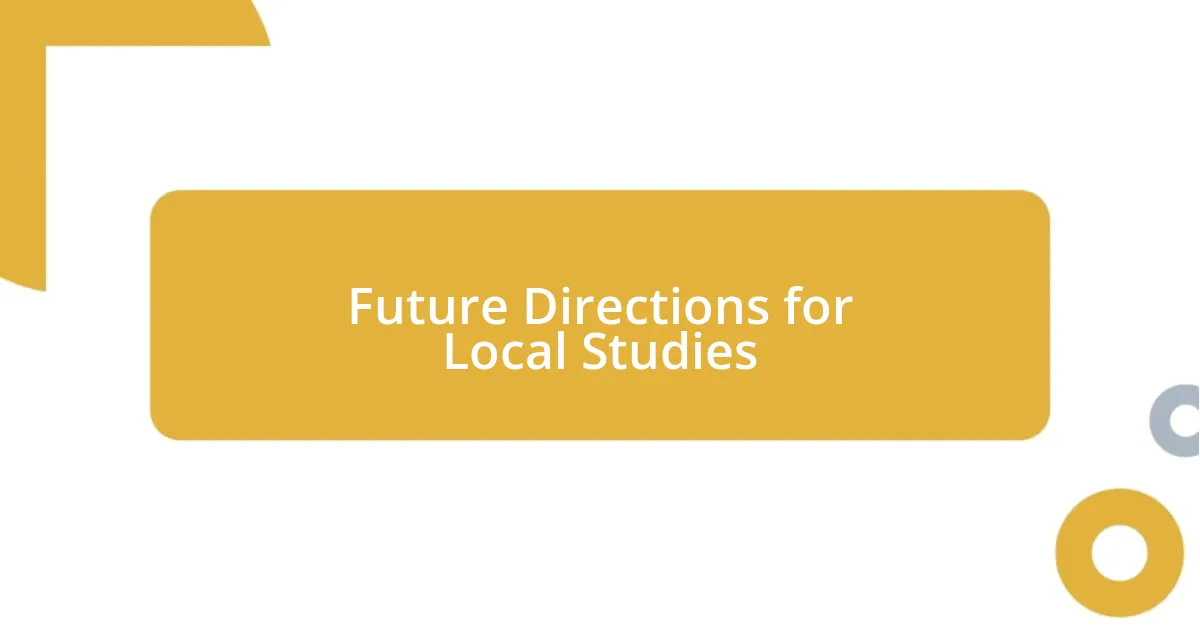
Future Directions for Local Studies
I see a bright horizon ahead for local studies, particularly in utilizing technology to engage communities. For instance, I once joined a project that employed mobile apps to gather real-time feedback from residents about city services. Imagine my surprise when we received instant insights that not only guided immediate adjustments but also demonstrated to the community that their voices truly mattered. Could technology be the bridge we need to enhance community participation further?
Engaging with local studies has also made me aware of the need for interdisciplinary approaches. I recall a fascinating collaboration with environmental scientists and urban planners aimed at assessing green spaces in urban areas. By blending expertise from various fields, we unearthed innovative solutions that recognized the interconnected nature of community well-being and environmental sustainability. How often do we overlook the synergy that comes from diverse perspectives in our research?
Looking towards the future, I believe storytelling will play an essential role in local studies. I once initiated a community narrative project where we encouraged individuals to share their journeys through written and oral formats. The emotional richness in those stories was captivating and highlighted issues that statistics failed to convey. Isn’t it inspiring to think that harnessing the power of personal narratives can create a deeper understanding of community dynamics? This could usher in more empathetic engagement from stakeholders and drive meaningful change.










